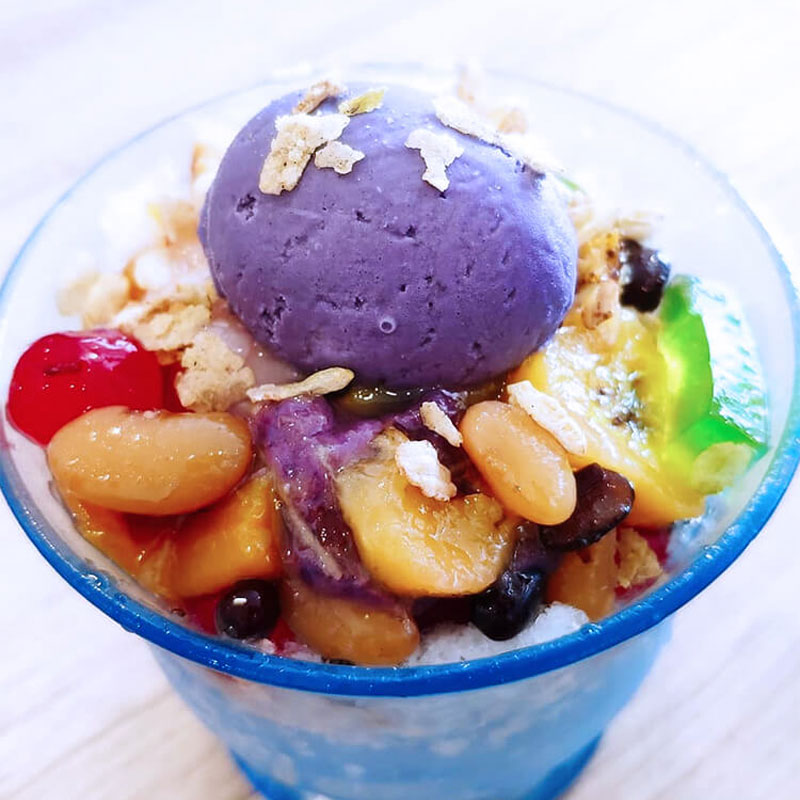Asteria Lending Inc. Unit 306 3/F 6762 National Life Insurance Bldg. San Lorenzo, Ayala Ave. Makati City
We’re Open: Mondays – Fridays
Office Hours:
9:00 am – 7:00 pm
Email:
[email protected]

South East Asia is well known for its exquisite food and the Philippines attracts curious culinary explorers from around the world every year. Mixing fresh, natural ingredients with delicious spices and delicate presentation, the food of Philippines is truly in a class of its own. Whether you enjoy spicy soups, deep, rich stews or fresh, light salads, you will always be able to find something to suite your tastes. This is our guide to the top ten dishes to try if you are visiting this beautiful country.
This rich, warming soup is a firm favourite among locals and is often made for family gatherings or social occasions. The tamarind and tomato flavour give the broth a deep, characterful flavour and it can be made from practically any kind of meat, vegetables or fish. Okra, broccoli and bok choy are frequently used and the distinctive sour flavour is said to have originated from Manilla, where this recipe was first made popular. In recent years, Sinigang has been flavoured with citrus fruits such as mango to accentuate the sharpness. Though perhaps too sour for younger children or those with a very sweet tooth, this dish really encapsulates the taste of the Philippines.
For the dessert lovers, Halo Halo is an absolute delight. Comprised of crushed ice, coconut, evaporated milk and sweetened beans, this unique and delicate dish is usually served at the end of a meal. Ube jam is mixed with caramel for an unusual but delicious taste and the layered presentation means that you get a slightly different experience with every mouthful. Portions are usually small as this is a very sweet desert, made to be enjoyed for its tantalising taste and textures.
Also known as Tapa, this breakfast dish is a hearty and substantial way to start your day. Made from dried beef, pork or sometimes venison, tapsilog is cured in salt, ready to be cooked as it is needed. Often fried and served alongside eggs and starchy carbs such as bread or rice, this meaty treat has some similarities to bacon or jerky, but with a very different flavour. The additional spices give the overall taste a distinctly Asian flavour that is unlike anything from the USA or mainland Europe.
Comprised of savoury peanut sauce and rich, fatty offcuts of meat, this delicious, energy giving stew is something of a local delicacy. Offal, pigs’ feet and oxtail are cooked over a long period of time to allow their natural flavours to marry with the peanut and vegetables in the stew. This results in an unctuous, hearty dish, full of complex flavours. Generally served as a main meal, Kare Kare can be very calorific so it provides plenty of energy. This makes it great to eat before a day of trekking or taking walking tours in the Philippine countryside.
This sharp, satisfying raw fish salad is a great source of protein and vitamins and provides a good alternative to a hot meal on a day where the South East Asian temperatures my be a little too much to bear. Red and white onions are finely chopped and mixed with other ingredients including ginger and white wine. The fish is prepared with vinegar or citric acid-based juices, like a ceviche. Served as an appetiser or as a lunch time snack, Kinilaw make a refreshing, light dish with plenty of unique flavour.
Ballot is almost certainly not for the faint of heart and may shock some tourists or expats who aren’t used to the street food of this part of the world. A fertilised duck embryo is boiled and served in the shell, usually hot or warm. This self-contained snack is very popular as it combines the flavour of egg yolk with the meaty texture of duck and its also very easy to eat on the go. Not suitable for vegetarians or vegans, this is cheap and economical snack designed to enjoyed quickly, between meals.
Roughly translated as “to simmer or cook in vinegar” this dish is a must for lovers of tender, well cooked meat. A suckling pig is roasted over coals very slowly for a long period of time. This gives the dish an incredible charred flavour but also ensures the meat is extremely tender. The scraps and leftovers are fried in vinegar and spices, which adds an extra dimension of sharpness and accentuates the natural sweetness of the tender pork.
Probably the most famous of all the Philippine dishes, this great tasting stew is popular amongst travellers as well as locals. Soy sauce and vinegar are combined with spices and vegetables before adding chunks of chicken breast or thigh meat. The marinating process gives the meat a distinctive flavour and the slow cooking means the natural juices from chicken mix with the broth to create a rich, fatty soup that is both warming and satisfying.
Another classic dish that has its origins in street food. Like Ramen, though with a slightly different flavour, panic can vary depending on where you are in the Philippines. Common ingredients include shrimp, oysters and other seafood but it can also be made with darker meats such as ox, beef or buffalo. Vegetables are usually crisp and light such as beansprouts or ginger and the plate is often finished with an egg.
One of the most popular sweet treats in the Philippines, kakanin is made from rice or rice flour and takes several different forms. Coconut milk is used in Suman, which is generally consumed after a meal or on its own whereas puto, a type of rice cake that is gently steamed, can be eaten alongside both sweet and savoury dishes. Kaknin can be found in its many different forms at street markets and restaurants across every island in the Philippines but the taste and ingredients can vary quite considerably.